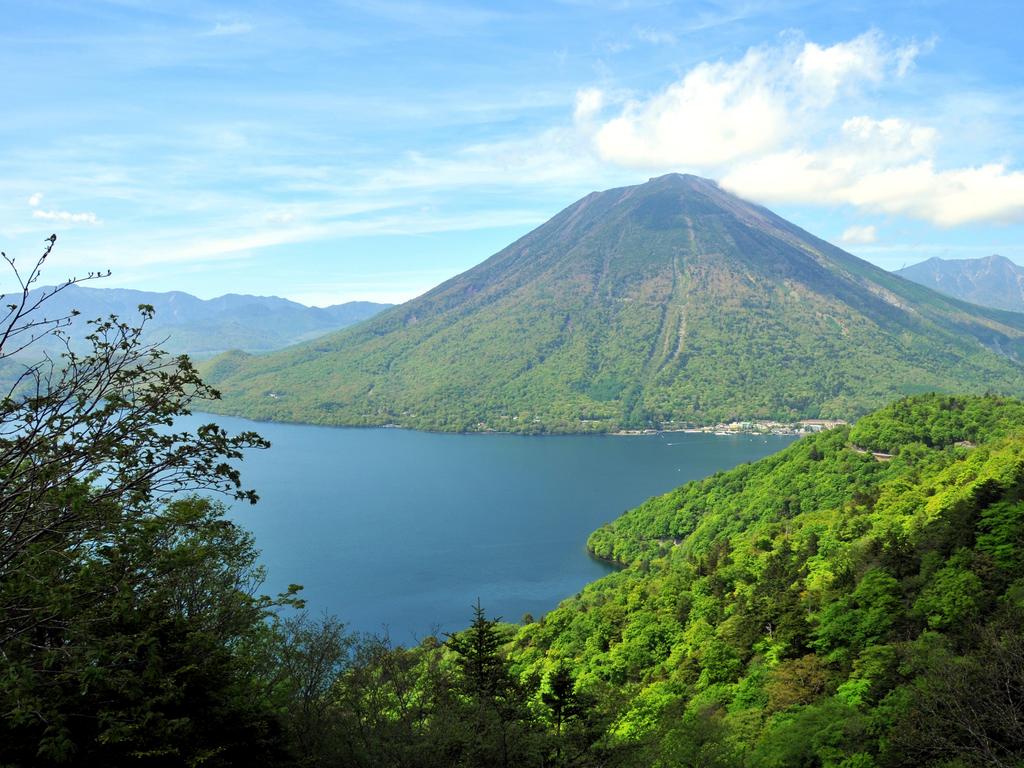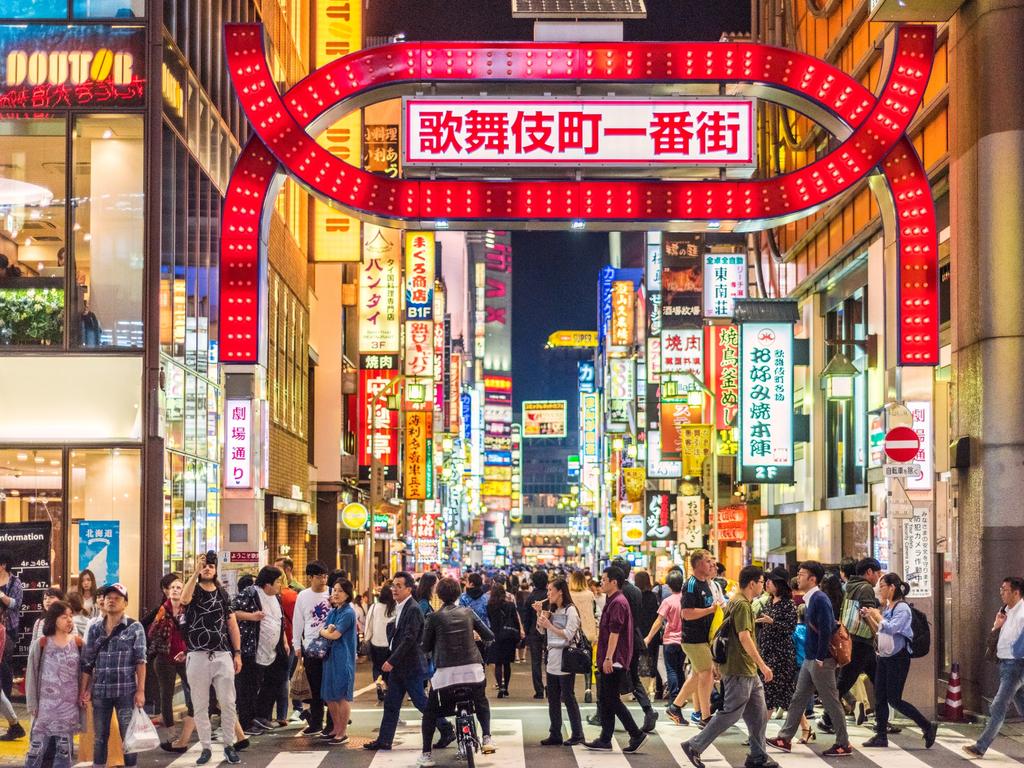Experience Japan’s best cuisine and Onsen bath houses all in one tour
Is there a quicker way of getting to know your fellow travellers than to get naked together in a public hot springs bath? Or perhaps it is over many delicious meals showcasing local cuisine. This is a walk like no other.

Our first night’s supper sets the tone for the week. It’s chanko-nabe, a hotpot loaded with chicken, tofu, noodles, cabbage and bean sprouts, beloved by sumo wrestlers for bulking up. On this Sunday night my travelling companions and I are seated sharing three large bubbling pots at a restaurant in Gujo-Hachiman, a mountain town in Gifu prefecture in central Japan.
As we scoop and slurp, proprietor Tatsukuni, an ex-wrestler, regales us with stories of his life 50 years ago as an 18-year-old, low-ranking sumo in a Tokyo stable and how he learned to cook chanko-nabe for his seniors while polishing off four pots a day to gain the necessary weight to give him a fighting chance.
Our convivial evening with Tatsukuni comes at the end of a day during which we have travelled from urban Nagoya to rural Gujo-Hachiman on the first of a four-night Onsen Gastronomy tour through Gifu, devised by specialist Walk Japan.
Travelling during Japan’s mild, green season of May, we are a group of nine – Australians, Hong Kongers, Asian-Americans and me, a Brit – plus two Japanese guides. We are here in search of hot springs and hot meals. But in Gujo-Hachiman we find fake food.

The craft and culture of Gujo-Hachiman
Gujo-Hachiman is the centre of Japan’s food sample industry. Such mouth-watering replicas are ubiquitous in Japanese restaurant windows and the lifesaver of many a hungry tourist. The industry originated in 1932 when a local businessman created a replica omelet in candle wax, and Gujo-Hachiman supplies 60 per cent of Japan’s food samples, with most visitors (ourselves included) passing through one of its three workshops to try to create a souvenir tempura or cos lettuce.
But there is deep craft culture, too, notably the carving of wooden geta clogs for the annual 30-night summer dancing festival, Gujo Odori, plus indigo dyeing. At Watanabe Somemono, a last-of-its-kind workshop with royal patronage and a 430-year heritage, signature koi carp streamers are hand-dyed, then rinsed in the freezing rivers.

Gujo-Hachiman’s rivers are its defining feature, and that afternoon we take the snaking Nagara River Railway along the valley to a deserted Ghibli-esque station where the sole exit leads directly into a large onsen bathhouse. It is the first of our trip and the perfect icebreaker. What quicker way of getting to know your fellow travellers than to get naked together in a Japanese public hot springs bath?
A Traditional Ryokan Breakfast: A Taste of Gifu’s Delicacies
Sufficiently bonded, the next morning we experience our first typical ryokan breakfast. It’s a virtuous spread of grilled salmon, Gujo ham, fresh tofu, vegetables simmered in broth, rice, pickled daikon radish and miso soup. Also bubbling away on a tabletop grill is Hoba miso, a regional speciality of red miso, mushrooms and spring onions cooked on a magnolia leaf. “In what order do we eat everything?” one of us asks. But there’s no set way so I scoop up the miso on to my fluffy Gifu rice and savour its sweet umami.

A short walk to Gujo-Hachiman castle rewards us with magnificent views of deep valleys and rivers before we board a private coach to travel along the Nagara River valley, then up into the mountains. Our destination is Hakusan Chukyo-jinja, an important pilgrimage shrine in the hamlet of Itoshiro. Local guide Hiroto is waiting to guide us into the sacred world of this unusual shrine that blends Buddhism, Shinto worship of mountains and Shugendo spirituality. We are deep into Asian black bear country, so Hiroto jangles his bell and we stay close while hiking in the rain through ancient forest to a majestic 1000-year-old cedar, with four towering trees growing out of a trunk split centuries ago by lightning. We spend the night in a modern ryokan with private onsen and there’s time for a soak before a 10-course feast of Gifu fare, such as grilled amago trout with myoga ginger, burdock and sesame, washed down with local sake as we watch a spectacular orange sunset.

Sacred shrines and ancient forests
An unbelievable (and, for some of us, intimidating) breakfast spread follows next morning with 17 little dishes, including soft fresh tofu, simmered kombu kelp, candied fava beans and an onsen tamago, which is a soft egg cooked in hot spring water. I eat valiantly before boarding a mini-coach (appropriately emblazoned with the motto This Time is Delicious) for Amidaga Falls, one of Japan’s top 100 waterfalls and the subject of a woodblock print by Edo-era master Katsushika Hokusai.
The undulating riverside trail is verdant with wild wisteria and cherry, sasa bamboo grass, ferns and moss, and the falls are at their peak, with snowmelt plummeting 60m, sending up rainbows of spray. A toe dip in the ice-cold water is enough for me; our daily onsen ritual is fast becoming my preferred form of bathing.
The steep mountain peaks soften to vanishing as we descend towards Takayama, a riverside city flanked by Japan’s Northern Alps and famous for its elaborate float festivals.
At Kakusho restaurant, in a 250-year-old residence with a pine and moss garden, we are treated to a 10-course shojin ryori (vegetarian Buddhist cuisine) lunch that is a genuine highlight. Created by a Kyoto-trained 12th-generation scion of the founder, it starts with freshly whisked matcha and includes the chef’s signature simmered black beans in ginger syrup, puffed-rice tempura and ikemori-namasu, a Takayama dish of tofu paste, microgreens and sansai mountain vegetables.

After lunch, we split up to stroll Takayama’s busy streets of Edo-era houses, shophouses, warehouses and sake breweries, marked by the sakabayashi balls of cedar leaves above their entrances. I explore the fascinating former Edo government headquarters, Takayama Jinya, and the Kusakabe Folk Crafts Museum, a magnificent wooden house built in 1875 for a family of wealthy Edo merchants. That evening, the 14-course dinner at Asano, our onsen ryokan, has us nearly beaten but serves up the trip’s best ayu, a river sweetfish popular in summer.

Oku-Hida and the mountain town of Hirayu Onsen
The following day, our destination is Oku-Hida and the mountain town of Hirayu Onsen. Our woodland walk will take us to Hirayu waterfall and sensational Hida beef tobanyaki – thin slices of marbled beef cooked on a ceramic plate over a flame – at a busy canteen with alpine views. It is our final full day and Walk Japan has saved the finest hot springs until last. At Yumoto Choza, a sprawling ryokan in the hot springs hamlet of Fukuji Onsen, chochin lanterns guide us into its historic farmhouse, where a fire smokes in the irori hearth and spacious tatami rooms feature futon, shoji doors and atmospheric lighting. I waste no time donning the complimentary yukata and haori jacket, picking up the basket and towel, and shuffling down to the riverside hot spring, which is one of five indoor and outdoor private and public onsen open to guests.

Steam rises as I wash, slip into the wooden tub and stretch out my limbs, my mind wandering over the intense yet enjoyable four days that have passed. Tomorrow this bite-sized tour will end in Matsumoto, after an impressive roster of hard-to-access places, well-chosen accommodation and scenic routes through Gifu’s magnificent landscape. We’ve seen swathes of wild mountain wisteria, glimpses of snow-topped ranges, rain-soaked forests and sampled food that has been unforgettable in its quantity, quality and variety. There have been laughs and camaraderie in the onsen and on the largely gentle strolls that make this journey less Walk Japan and more Eat Japan.
The Onsen Experience: Bonding in Japan’s Famous Hot Springs
If the tour lacks anything, it is confident guiding. Our lead guide does not seem at ease with the route (it is new to the portfolio) and volunteers little insight into the sights and surroundings without prompting. Naturally, group members – half of whom are new to Japan – have questions about dining etiquette, ingredients and sake pairings that should have been better anticipated on a food-themed tour and doubtless will be in the future.

However, Walk Japan’s thoughtful backstage planning carries the tour, unfurling Gifu’s charm through many considered details and demonstrating how worthwhile it is to venture off the east coast into rural Japan. Indeed, the convenient start and end points are the reason many of the group have managed to slip Onsen Gastronomy: Gifu into their itineraries between Tokyo and Kyoto, and they will rejoin the classic Golden Route the following day. I plan to travel onwards from Matsumoto to the Sea of Japan coast but, for now, I need to haul my crinkly self out of the tub. There is the small matter of one final banquet to devour.
In the know
Walk Japan’s four-night Onsen Gastronomy: Gifu itinerary starts in Nagoya and ends in Matsumoto, the tour takes in Gujo-Hachiman, Itoshiro, Takayama and Fukuji Onsen. Price is inclusive of accommodation at Japanese inns, transfers, entrance fees, three meals daily and guiding. Average walking is 4km a day; ¥360,000 ($3589) a person. Maximum tour size is 12. Single supplements available.
Kate Crockett was a guest of Walk Japan.
If you love to travel, sign up to our free weekly Travel + Luxury newsletter here.




To join the conversation, please log in. Don't have an account? Register
Join the conversation, you are commenting as Logout